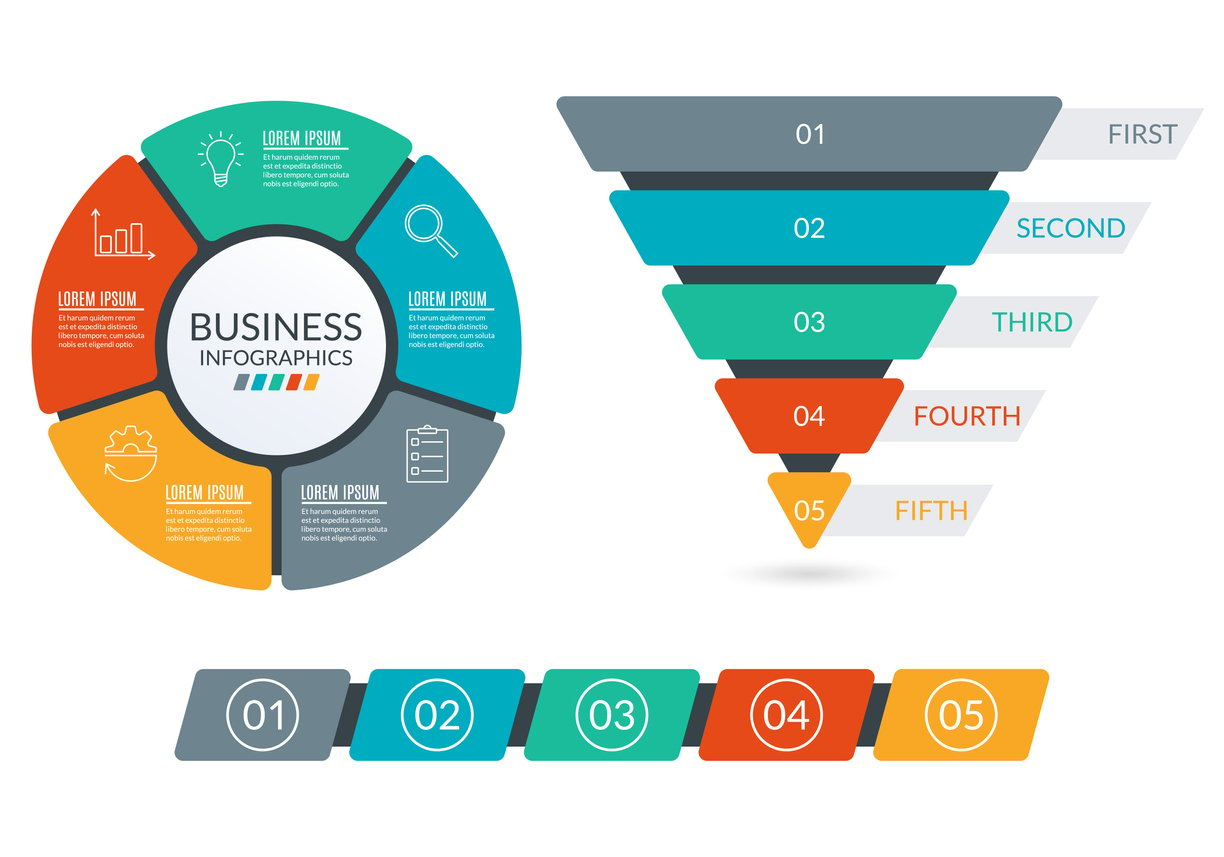
Boost Lead Quality and Scale Fast: Automated Lead Generation
 Updated on
Updated on
By Ringy
Table of Contents
Table of Contents
Have you been thinking about how to generate leads faster and more efficiently? Tired of the monotonous, repetitive tasks required to bring in those leads?
We're here to tell you there's another way (and it doesn't require hours of manual labor.)
Automated lead generation.
AI and machine learning technology are no longer reserved only for science fiction films. Lead gen automation is quickly becoming a norm among enterprises all around the world, searching for more effective ways to improve the number of quality prospects in their sales pipelines.
This article explores how the AI revolution and automation are changing how we generate commercial and life insurance leads (pretty much any lead.) You'll learn everything from what an automated lead generation system is to how to set up workflows of your own (one that drives the results you're looking for.)
Ready to get started?
Let's get into it!
What Is Automated Lead Generation?

Did you know that more than 60% of marketers now use artificial intelligence and automation to generate more leads for their products?
It's a substantial figure that shows how prolific and influential this technology is in marketing efforts (especially in insurance lead generation.)
But what is automated lead capture?
It's the process of freeing up your or your agents' time with digital tools that assist them with the mundane tasks associated with lead generation, such as:
- Cold calling
- Identifying prospects
- Follow up emails
- Reaching out through various channels
- Nurturing leads (think DRIP campaigns)
- Content creation
Automated lead enrichment requires that you piece together various strategies and techniques to help maximize your effectiveness while keeping costs low. For example, email templates are utilized in trigger-based events, where a certain action by a lead gets a response from the lead generation marketing automation tool.
If you want to make implementing automated lead generation painless, take a step back and examine what in your organization's lead gen process could flourish with automation and what would not.
Here's a simple overview of a lead generation process.
|
Stage |
Description |
|
Attract visitors |
Use SEO, content marketing, social media, and other outreach methods to drive traffic to your site. |
|
Capture leads |
Implement lead magnets and forms to collect visitor information. |
|
Nurture leads |
Engage leads through email campaigns, personalized content, and follow-ups. |
|
Qualify leads |
Use lead scoring and analytics to identify high-potential leads for sales. |
Look at each of these steps in your own business closely and determine if there is a tool to help you automate it.
For example, did you know that Ringy allows you to score leads based on specific criteria? Our software makes it easy to see where your leads are in the sales funnel while providing insights and reports essential to converting more leads into paying customers.
Key Benefits of Automated Lead Generation

People like things that make their lives easier.
Well, automated lead generation can definitely make a difference to your business operations.
This section explores the key advantages of an automated lead generation system and what each one means to a company looking to improve its outreach process.
Efficiency and Time Savings
Time is money!
If you own a business, this saying should ring resoundingly true.
With the ability to automate repetitive tasks, you free up your team's time to concentrate on high-value activities, such as nurturing prospects with a greater possibility of converting or managing the creation of content that resonates with leads in a particular part of the sales funnel.
Higher Lead Quality
Customers make our businesses move.
Without them, it'd be impossible to turn a profit.
For example, B2B sales leads are typically more expensive to obtain compared to B2C. This makes lead scoring and qualifications of these prospects even more important. If you identify leads with a strong purchase intent, it'll be easier to close more deals with people who actually have an interest in your product or services.
Automated lead management technology gives you the tools needed to streamline these processes so that your sales staff can focus on what matters most—closing those deals!
Scalability
Traditional lead generation requires a ton of manual labour, but that's where lead and marketing automation software is kicking things up a notch.
Companies of all sizes are beginning to take advantage of the scalability aspect of automated lead conversion.
This means organizations can:
- Reach more potential clients efficiently
- Maximize resources without expanding headcount
- Maintain high-quality interactions and lead nurturing
The result? A significant boost in lead generation without increasing labor expenses, driving sustainable growth and productivity.
Enhanced Customer Insights
Insights and reports regarding your customers are not only helpful in getting to know your ideal customer profile better but also give you the data to tailor your messaging or sales tactics to better match their persona.
With automated lead generation sales software, like Ringy, you can track lead:
- Behavior
- Engagement
- Preferences for targeted outreach
Having this enhanced look at your customers gives you the ability to make more intelligent decisions when it comes to how they should be nurtured and what makes the tick.
Consistent Nurturing
DRIP campaigns are a key feature of automated lead generation software. It ensures leads are contacted regularly (but not too often) through a scheduled, automated lead information system that either works through a trigger-based event or a set time schedule.
Gone are the days of having to manually send out emails to leads, one at a time.
Key Strategies for Automated Lead Generation

Want to know exactly how to automate lead generation?
Here's how to get started and turn client acquisition in your organization into a well-oiled machine.
Content Marketing and Lead Magnets
Content is king!
Automated lead generation depends on content marketing and lead magnets to attract potential customers and teach them about your products or services.
There are a few ways to do this including but not limited to:
- Creating downloadable guides
- Webinars
- Blog posts
- Email campaigns
These resources not only engage the audience with practical insights but also create opportunities for follow-up by collecting contact information. You'll be able to build connections with leads, making it easier to nurture them while converting them into long-term, loyal customers.
Automated Email Campaigns
Automated email campaigns, like those offered by Ringy's DRIP feature, make lead nurturing feel effortless. By using scheduled, personalized content, these DRIP campaigns help guide leads through the buyer's journey at just the right pace, keeping your brand top-of-mind without overwhelming them.
Ringy's DRIP campaign feature ensures that each touchpoint feels tailored and timely.
Social Media Lead Capture
By setting up automated lead forms on platforms like LinkedIn, Facebook, and Instagram, you can seamlessly collect valuable information from engaged users without adding friction to their experience.
These automated forms allow potential leads to submit their details with just a few taps, making it easier for your organization to follow up with relevant content or offers.
Landing Page and Form Optimization
Landing page and form optimization is essential for maximizing your conversions.
Using A/B testing, you can fine-tune your landing pages and forms to discover what truly connects with your audience. This means trying out different:
- Headlines
- Layouts
- Calls-to-action
- Form fields
By continuously experimenting and analyzing user behavior to find the winning combination, you can make data-driven tweaks that enhance the user experience and boost conversion rates.
Using Chatbots for Instant Engagement
Using chatbots for instant engagement is a smart way to capture visitor interest and guide them through your site. Deploying chatbots on key pages allows you to provide immediate responses to questions, direct users to the information they need, and keep them engaged without delay.
With this level of instant interaction, you can create a seamless user experience that helps nurture leads and builds trust—all while saving time and effort for your team.
Data-Driven Targeting
By leveraging data analytics, you can gain deeper insights into user behavior, preferences, and trends, helping you tailor your approach to meet their specific needs.
With this strategy, your content and offers become more relevant and impactful, boosting engagement and conversion rates. Data-driven targeting ensures that you're not just casting a wide net but reaching out with precision, making each interaction more meaningful and effective.
How to Set Up an Automated Lead Generation Workflow

Creating an automated lead generation workflow can transform your marketing efforts, allowing you to attract, qualify, and nurture leads efficiently. This step-by-step section provides in-depth insights into setting up a workflow that maximizes your lead generation potential and boosts conversions.
Define Lead Qualification Criteria
Before setting up an automated workflow, it's crucial to determine what makes a lead valuable to your business.
Start by defining lead qualification criteria that help you score leads based on engagement, behavior, and demographics. For instance, consider how potential customers interact with your website, such as the number of pages visited, the type of content consumed, and repeat visits.
Lead scoring can include assigning points to actions like downloading an e-book, attending a webinar, or clicking through an email. The demographic data, like job role, company size, or location, further enhances your scoring model.
Create Lead Magnet Content
The backbone of any successful lead generation workflow is the content that draws prospects in.
Creating lead magnet content that aligns with the interests and pain points of your target audience is essential for capturing their attention.
Content can take various forms to suit different stages of the sales funnel:
- Top of the Funnel (Awareness Stage): Develop blog posts, how-to guides, and infographics to inform and educate potential leads. At this stage, your goal is to attract a wide range of visitors who may have a problem that your product or service can solve.
- Middle of the Funnel (Consideration Stage): Focus on content that provides more in-depth information, such as whitepapers, case studies, and webinars. This helps position your company as an expert and builds trust.
- Bottom of the Funnel (Decision Stage): Offer content like free trials, product demos, or consultations to encourage leads to take the final step and become customers.
Ensure that your lead magnet content is valuable, relevant, and easy to access. This will encourage users to share their contact information in exchange for the content, which fuels your lead nurturing process.
Build Landing Pages and Forms
Once you have compelling lead magnet content, the next step is to design high-converting landing pages and forms.
Landing pages should be clear, concise, and focused on one primary call to action (CTA). For example, if your content offer is a free e-book, the page should emphasize the value of downloading it without distractions.
Here are four best practices for landing pages:
- Use engaging headlines that highlight the benefit of your offer.
- Incorporate visuals like images or videos to capture attention.
- Keep forms simple with minimal fields—just enough to gather essential data without overwhelming the user.
- Add social proof, such as testimonials or success stories, to build credibility.
Your forms should be integrated into the landing pages and optimized for conversion. Consider using features like auto-fill and mobile-friendly designs to make the process easy for users. The easier it is to fill out the form, the higher the conversion rate will be.
Set Up Nurture Campaigns
Nurturing your leads is where the magic of automated lead generation really shines.
Set up automated email workflows that are triggered by specific lead actions, such as a content download or a page visit. These workflows should guide leads through the sales funnel by delivering relevant, personalized content at each stage.
Components of a successful nurture campaign include:
- Personalized Content: Use the data you've collected to personalize emails based on user behavior and interests.
- Timed Follow-ups: Space out your emails to avoid overwhelming the lead. DRIP campaigns are an excellent way to provide consistent value over time.
- Behavior-Based Triggers: Configure your workflow to respond to actions like opening an email, clicking a link, or revisiting your website. This ensures that each email feels relevant and timely.
For example, if a lead downloads a whitepaper, the next email could offer a related webinar or case study. This kind of tailored approach keeps the lead engaged and helps build trust, making them more likely to move toward a purchase.
Integrate with CRM and Marketing Automation Tools
A smooth workflow requires seamless data transfer between your lead generation tools and your customer relationship management (CRM) system. Integrating these tools ensures that no lead falls through the cracks and that your marketing and sales teams have access to up-to-date information.
Here's why integration matters:
- Centralized Data: All your lead data—like contact details, interaction history, and scoring—should be accessible in one place. This makes it easier for your sales team to track progress and follow up effectively.
- Automated Tasks: Integration helps automate tasks like updating lead statuses, sending alerts to sales reps, and moving leads through different stages of the sales funnel.
- Enhanced Analytics: With data flowing smoothly between systems, you can gain comprehensive insights into how your campaigns are performing and where leads are in their journey.
Ensure that your CRM and marketing automation tools are compatible and properly synced. This allows you to manage leads cohesively and support better communication between teams.
Use Analytics to Refine
Setting up an automated lead generation workflow is not a one-and-done deal. Regularly reviewing key metrics helps you identify what's working and where adjustments are needed. Look at analytics like open rates, click-through rates, conversion rates, and overall lead quality.
By consistently refining your workflow based on data insights, you'll create a dynamic, high-performing lead generation system that adapts to changing trends and user behavior.
Get Started With Automated Lead Generation
Setting up an automated lead generation workflow is essential for optimizing your marketing efforts and ensuring you capture, nurture, and convert leads efficiently.
If you're looking for a powerful CRM to help with all your lead generation tasks, Ringy is here to help.
With its seamless automation, intuitive interface, and robust analytics, Ringy makes it easier than ever to capture, manage, and convert leads.
Request a demo today and skyrocket your lead generation efforts into the stratosphere.

Skyrocket your sales with the CRM that does it all.
Calling? Check. SMS? Check. Automation and AI? Check. Effortlessly keep in touch with your customers and boost your revenue without limits.

Take your sales to new heights with Ringy.
Sales in a slump? Ringy gives you the tools and flexibility you need to capture leads, engage with them, and turn them into customers.
Subscribe to Our Blog
Enter your email to get the latest updates sent straight to your inbox!
Categories
Related Articles



























































































